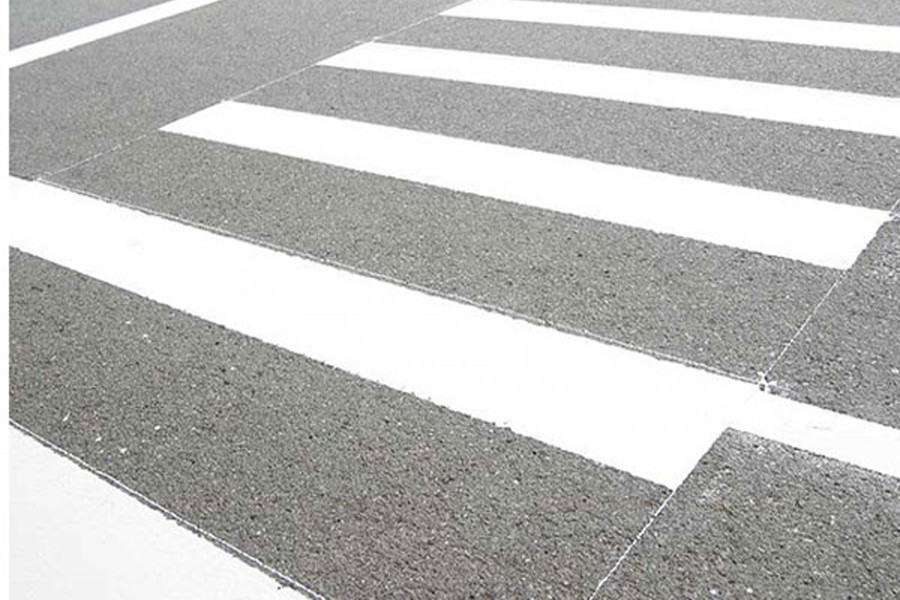The bus that ran over Abrar Ahmed Chowdhury on zebra crossing, claims Dhaka Metropolitan Police (DMP) chief Asaduzzaman Mia, had no route permit to operate it in the city. Its route permission was for operation between the capital and a small town, Gaibandga. Additionally, the bus faced legal actions as many as 27 times before. Now why did it require the tragic death of a university student, also a road safety campaigner, to detect that the bus used to illegally operate on the city road? What were the offences it committed on those 27 occasions? The latest information is that the bus was driven by its conductor at the time of running over Abrar. Its driver had been arrested by the police only a little while ago for hitting a girl student at Gulshan's Shajadpur. Severely injured, the girl is now recuperating.
It is a clear indication of the anarchy that reigns supreme on the road. If the driver was arrested, how could the bus got off? Why was not the bus detained and seized immediately? Offences committed 27 times by a bus can still finds its way through city roads! Isn't it unbelievable? Somehow or other, operators of public transports manage the authority to once again obtain unwritten permission for operation of their vehicles.
Asaduzzaman Mia did not mince words. He was categorical to put the blame squarely on the traffic sergeants who allow buses without route permit or fitness to operate on city routes. Another report carried in a Bangla contemporary recently claimed that half the buses running in the city streets have either no route permits or road-worthiness to stay in service. If this is so, how can those buses operate here without detection? In fact it is an open secret and the irregularities are deliberately allowed to continue because those serve the ill motives of a section of traffic officials, transport ministry and associations and politicians each.
According to another report, 70,000 buses run in the capital without renewal of fitness certificates for the past 10 years. No one really knows how road-worthy those buses are. Then there are unregistered buses, the number of which is unknown. Add to this the drivers who sit at the steering wheel without proper training and driving licences. The picture that emerges is really frightening.
No wonder, the imbroglio prevailing in the transport sector has prompted a High Court bench to pass a suo moto order on the parties concerned to submit information on unfit and unregistered vehicles along with drivers without driving licences. Its follow-up should be interesting. If experiences are any guide, the authorities on receiving the notice to respond to the HC queries appeal for time and delay the process inordinately as long as they can. They should not be allowed any such leeway in case of providing information on unfit and unregistered vehicles and unqualified drivers.
The reason behind frequent fatal accidents actually lies in the chaos and anarchy prevailing on roads all over Bangladesh. The pedestrians also contribute to the chaos. They do not comply with the minimum traffic rules with road crossing at will and at any point, sometimes while using their cell phones, and jaywalking. All this shows that there is a need, first of all, for serious introspection on the part of those responsible for traffic management. If the healer suffers the ailment, cure is a distant dream for the patient. The death of two students and injuries to several others of Shaheed Ramzuddin Cantonment School under the wheel of a bus last year and the crushing of Abrar on zebra crossing are not the only such killings. Almost every day students -quite a few of them -either in the capital or elsewhere are left mangled. A contemporary now reports that of the total road-accident victims, 12 per cent are students. The other day along with a few such deaths there was the news of a conductor pushing a student of Sylhet Agricultural University off a running bus, leading to his untimely death. It gives an insight into the mentality of transport operators so far as lives of the passengers and pedestrians are concerned.
Against such a bleak perspective, some positive moves such as U-loop or circular bus service cannot yield the expected benefits because of lack of coordination. The 111 recommendations put forward by a committee for restoring discipline on the capital's roads are an exercise in futility because the most important ones were simply a repeat of the earlier ones. The Prof. Anwar Commission Report submitted 50 recommendations in 2012 but hardly any of those could be implemented.
Now that the High Court has taken cognizance of the problem, it should as well keep watch on the circular bus service the two city corporations have pressed into service. In fact, such a move is likely to bring about some positive results. But the fear is that the service may be brought to disrepute before it is tried after all the criteria needed for its success have been fulfilled. Infrastructure for the service has to be properly created and maintained. Bus stands and ticket counters should be manned by trained people who will oversee stoppage time and help passengers get on board buses and alight from those. Streamlining the service can do the trick.


